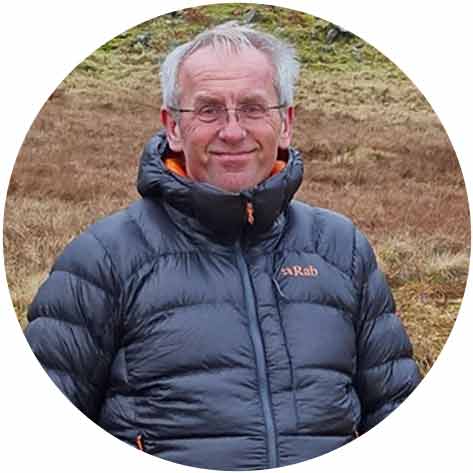Ama Dablam 2013 - Gear Choice & Reviews
Posted by Mark Richardson on Nov 04, 2013
I will highlight some of the gear I used a lot, or liked a lot (or both). My entire gear list can be found further down the page.
Western Mountaineering UltraLite (long) – I brought more than one sleeping bag for this expedition. This may seem excessive, but high on the mountain it can be a lot colder then during the trek in, so to use just one bag can be inconvenient. Also, it’s good to be able to leave your warm bag in a high camp when you go back down to BC for a rest, so you don’t needlessly carry it up and down again and again. I used the UltraLite during the trek through the Khumbu and its teahouses and also as my basecamp bag. BC was quite cold this season, so I had to use a GoLite Ultra 20 quilt as a down liner in the Western Mountaineering bag.
I’ve kept a record of the temperatures inside my shelter (either teahouse or tent) and the ‘comfort rating’ for a few days. I was pleasantly surprised the Ultralite was comfortable well below its official rating of -7c.

Thermarest NeoAir xTherm sleeping pad (regular) – I used the Xtherm (US R-value of 5.7) as my high-camp sleeping pad and used a NeoAir All Season (US R 4.9) at basecamp – again, to not have to carry one pad up and down the mountain, although the light weight of the NeoAir pads would make this less of a problem then many other, heavier, pads. In most camps I used a thin closed cell mat under the NeoAir for protection. Extra padding was not required for extra warmth, as the high US rated R-value of 5.7 was good enough for temperatures down to -25/-30(ish). It’s also a very comfortable pad, much more so then the regular self-inflating thermarests.
Helinox Passport TL trekking poles - These are fixed length trekking poles (I use the 115cm version), and really don't look very strong. But trust me, they are. I've slipped once or twice, and the poles bend (a bit), but don't break! They are also very light, at 158 grams per pole and fold up to only 35cm!. Trekking poles aren't everybody's cup of tea, but I wouldn't go without them, if the terrain allows for their use.
Jetboil Sol with Sumo cup - Normally stoves and pots are supplied by the operator, and they were on our expedition. The problem is you don't know what you're going to get. It could be a Pocket Rocket, which are light, but not the best for expedition use in my opinion. So I decided to bring my own, because I know the Jetboil is light, the Sumo 1.8 liter pot is big enough and allows for a gas canister inside and, basically, it's a snow melting machine. Hydration is important! I would take it again.
Julbo Monte Bianco sunglasses with cat. 2-4 Cameleon photochromic lenses - I wore these the whole expedition, they look stylish enough for in town (if you care about that kind of thing), were good during the trek in, and thanks to the (removable) side wings and cat.4 lenses, they were also perfect for high up the mountain. The photochromic lenses adjust to the intensity of the sunlight. Fortunately we did not have a lot of wind, but if we had, my Julbo Revolution goggles (with cat. 2-4 Zebra lenses) would protect my eyes.
Arc'teryx Alpha FL 45 backpack - This was the only pack I used during the entire expedition. I love it. This is a real alpine climbing pack with all the features. A post with initial impressions of this pack I wrote can be found here. The pack is min. 32 liters and max. 45 liters. With the bungy cords and hooks and loops you can attach some more stuff to the pack. The only time 45 liters was too small was for the move to high camp 2.
Yellowbrick Tracker - This satellite communicator (text-only, based on the Iridium network) allowed me to stay in touch with home (text and tweet), and vice versa. I would not go on an expedition again without it.

|
||
 |
||
|
Mark Richardson |
||
|
Mark was the founder of Ultralight Outdoor Gear back in 2006 and has completed long distance backpacking routes in some of the remotest parts of the world. His favourite hikes have been Torres del Paine (full circuit), the John Muir trail and the Markha Valley trail (Ladakh, India). Although semi-retired Mark has not lost any enthusiasm for minimalist backpacking and is tackling Scotland’s Munros choosing multi-day backpacking routes over the more usual guide book excursions. |
||
